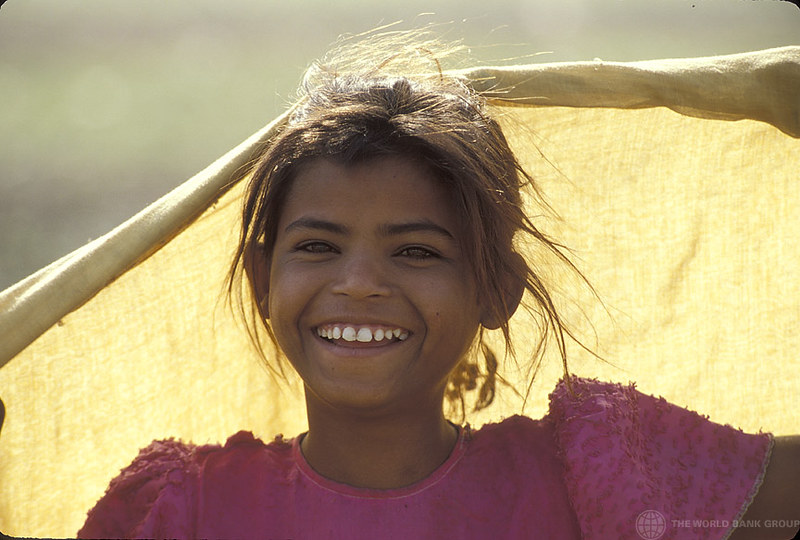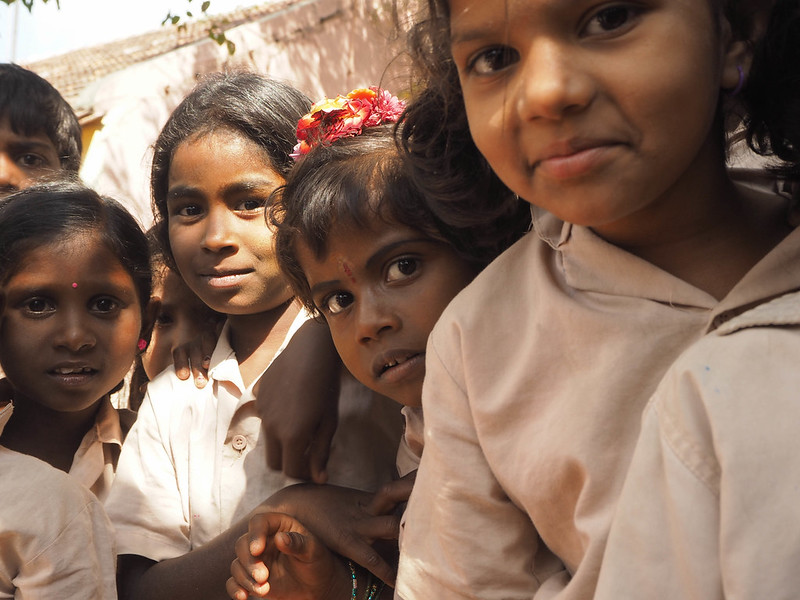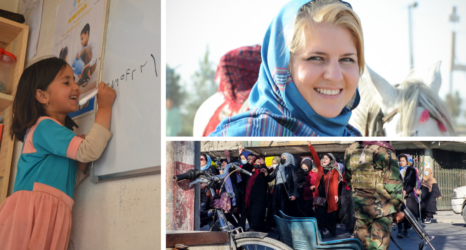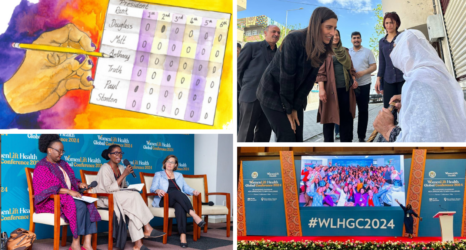
At 21-day lockdown in India has halted operations for all but essential services—bringing a country with a population of upwards of a billion to a grinding halt.
Amid the many impacts of implementing the world’s biggest lockdown, India’s cohort of adolescents (aged 10-19)—the largest in the world—face unique challenges as schools close across the country.
Over 47 percent of India’s adolescent population are girls who, under normal circumstances, face significant gendered barriers with respect to accessing essential services on a daily basis. While we have only just begun to unravel the social and economic impact of the COVID-19 crisis, it is already leaving young women further exposed to violence, abuse, discrimination, malnutrition and health issues.
Impact on Nutrition and Access to Services
About 96 percent of children in rural India are enrolled in government schools, where free education is provided to boys and girls aged 6-14. Children attending these schools are generally from poor socio-economic backgrounds relying on the few amenities provided by the school infrastructure.
In addition, all government schools provide cooked mid-day meals (MDMs) with specified nutritional norms and age-graded calorific values. Given that India is home to the largest number of malnourished children in the world and the gendered nature of nutrition provision for girls in households, MDMs are a significant contributor to combatting malnutrition and ensuring that girls enrolled receive at least one healthy meal a day.

The country-wide school closure (in effect from mid-March to May 3, with speculations of a possible extension) has left most government schools with little or no provision for virtual schooling. The closures may subsequently be prolonged by mandatory annual summer vacations for schools in India due to harsh summers (mid-May to beginning of July).
With many agrarian families also being deprived of their income during this period, it’s not hard to imagine the nutritional implications of this loss on girls from these households.
In addition to daily one-time meals, schools also regularly offer provisions such as sanitary napkins. These are essential services for adolescent girls, especially given the extreme barriers they face for maintaining basic menstrual hygiene. Menstruation taboos, particularly in rural India, bring with them increased censorship and restrictions on girls’ mobility, concerns of sexual violence, early marriage and serious health risks.
Distribution of sanitary napkins, a proven strategy to keep girls in school for longer in many contexts, helps ease access and destigmatizes menstruation.
The official notification for essential services and products during the lockdown was only recently expanded to include the production of sanitary napkins.
However, the issues of transport and access that adolescent girls may face—given the limited availability of products and the restrictions on their mobility—are still being ignored.
Other measures—such as distribution of iron and folic acid tablets, supplementary nutrition packages and immunization—also remain severely affected due to little or no strategic guidance and planning in the implementation of the lockdown.
After much advocacy, the government advised on door-to-door distribution of supplementary nutrition products eight days after the announcement of the lockdown.
The implementation of this initiative remains challenging at the village level. Even in a best-case scenario, this shifts the burden of execution onto informal women workers on the frontlines of the Indian healthcare delivery mechanism, who often have no access to personal protective equipment.
Other Repercussions of the COVID-19 Fallout
In India, girls tend to drop out of school as they reach puberty due to a variety of reasons ranging from menstrual taboos or burden of housework to inequitable perspectives and attitudes, as well as fear of violence.
Early dropout from schools further enhances vulnerability to early marriage and increases burden of care work, violence, loss of reproductive and sexual health and rights, and lack of access to employment opportunities.
There have also been numerous reports on the spike in domestic violence cases across the country. There are far too many repercussions for young girls, who are bound to the confines of their homes, often with abusive parents or partners.
For adolescent girls who are married and/or out of school, things may be more complicated as they have limited or no access to community spaces, or programs run via frontline workers. They also may not be able to access services provided by NGOs and civil society efforts such as sexual and reproductive health, family planning, counselling on issues related to violence and mental health, and linkages with skilling and training, among others.
If this crisis is prolonged, it’s bound to hasten the cycle of vulnerabilities for girls and young women.
Where Do We Go From Here?
There is ample evidence that highlights how unplanned policy responses lead to serious consequences for many groups of people, particularly women and girls. Emerging reports from across India reveal how persons with chronic diseases and pregnant women have been impacted due to the little notice given before the lockdown went into effect.
As the global community calls for greater consideration of the nuances of how policy responses affect girls and women differently, we must ensure that civil society, NGOs and other humanitarian initiatives continue serving the needs of girls alongside systems to address challenges posed by COVID-19 fallout.
With heavily curtailed access to resources during this time, differentiated policy guidelines are critical to address the enhanced vulnerabilities of girls. A few focused responses that can be considered include:
- announcing clear guidelines and safety measures for frontline workers as well as for departments responsible for implementation of emergency response directives;
- ensuring that adolescent girls are able to continue their education post lockdown by creating provisions;
- fulfilment of nutritional requirements, menstrual hygiene products, and essential reproductive health services; and
- creation of helplines for mental health counselling during and post COVID-19.
Studies have shown that crises such as pandemics, disasters and emergency situations exacerbate gender inequities and have a disproportionate negative impact on vulnerable populations, particularly women and girls.
As we go forward and move deeper into the pandemic, we must make smarter and more gender-responsive policy choices.
The coronavirus pandemic and the response by federal, state and local authorities is fast-moving. During this time, Ms. is keeping a focus on aspects of the crisis—especially as it impacts women and their families—often not reported by mainstream media. If you found this article helpful, please consider supporting our independent reporting and truth-telling for as little as $5 per month.





